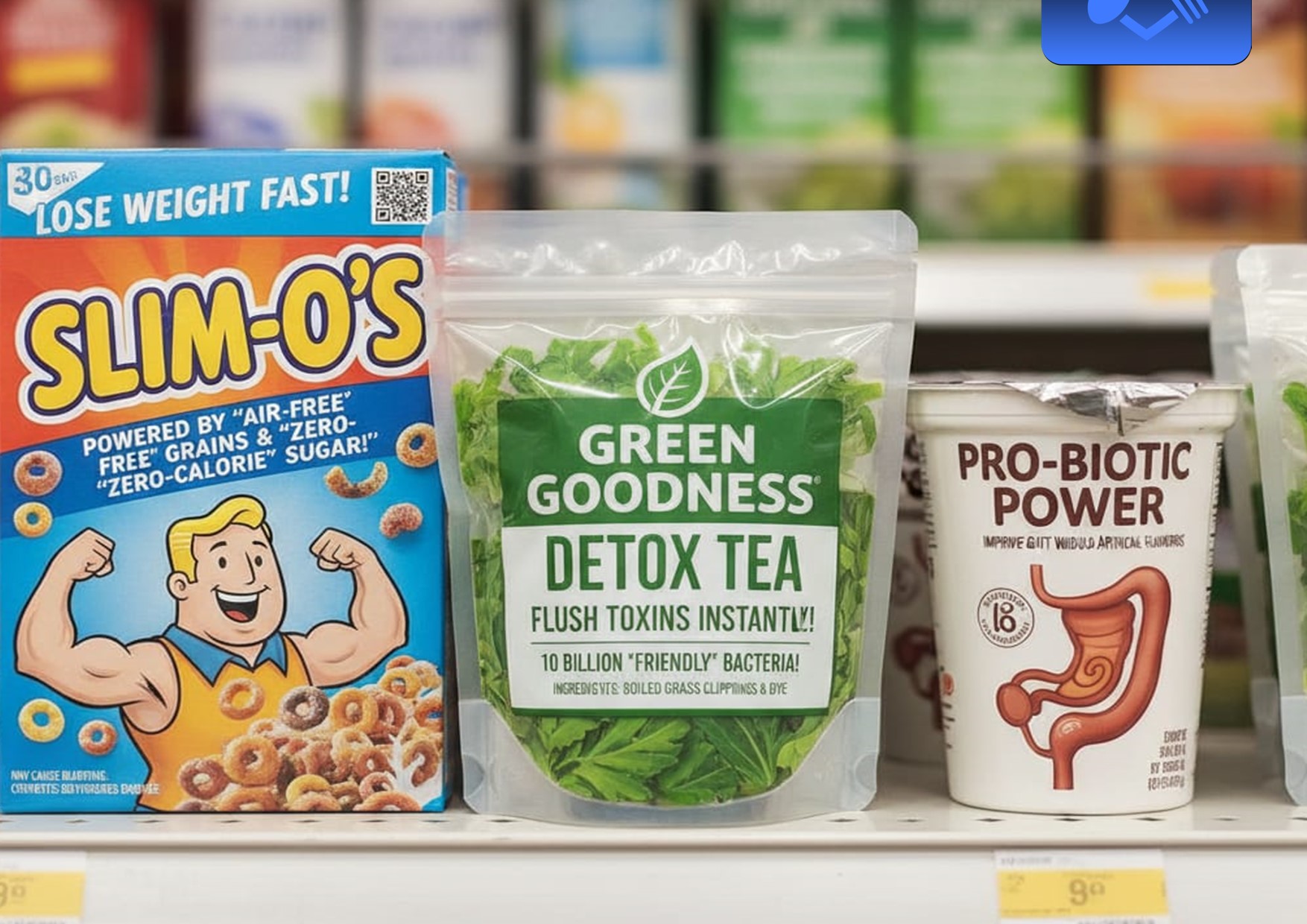
Labels are Lies
Freedom or Manipulation? The Hidden Trap of Modern Food Choices
We’re told every day that everyone has a choice.
Eat well or eat junk. Exercise or stay still. Be healthy or don’t.
Sounds simple, right? Freedom at its finest.
But here’s the truth no one wants to admit — the modern food system isn’t an open field of choice. It’s a labyrinth. A maze designed not to nourish you, but to confuse and control you.
The Illusion of Choice
Walk into any supermarket and you’ll see it:
“High protein!” “Low fat!” “Heart healthy!” “Plant-based!”
Rows upon rows of bright labels, bold claims, and smiling models selling you the image of wellness.
But behind that shelf of “healthy choices” are billion-dollar corporations hiring the best psychologists, marketers, and behavioral scientists money can buy.
Their goal? Not to make you healthy — but to make you loyal.
Every slogan, every color scheme, every “feel good” tagline is designed to hit the same part of your brain that lights up with addiction.
They don’t just want your attention.
They want your biology.
How They Keep You Hooked
The processed food industry isn’t about food.
It’s about formulas.
Chemically engineered mixtures of sugar, salt, seed oils, and synthetic flavors calibrated to hijack your senses and reward circuits.
It’s the same science casinos use to keep gamblers at the slot machine —
only this time, the prize is a bag of chips or a bottle of neon “energy.”
And just when your body starts breaking down from the endless flood of inflammation, fatigue, and insulin spikes…
There’s a new “solution.”
A pill.
A powder.
A detox.
Another product to patch the symptom of a system built on sickness.
The Cycle of Dependence
That’s the cruel brilliance of it all.
They profit twice — once when you buy their fake food,
and again when you buy the fix for the damage it caused.
This isn’t freedom.
This is manipulation wrapped in marketing.
We’ve been conditioned to believe that “choice” means picking between two brands owned by the same parent company —
when real choice means understanding what’s in the food and what it’s doing to you.
What Real Freedom Looks Like
Real freedom isn’t about choosing between “low-fat” and “keto-friendly.”
It’s about seeing through the noise.
It’s knowing that olive oil beats canola, that real salt beats processed sodium, and that food without an ingredient list doesn’t need a label.
Freedom starts when you stop letting packaging tell you what’s healthy.
When you pick up an avocado instead of a “heart-healthy” snack bar.
When you read the label and recognize every word.
When you take your biology back.
The Courage to See
Yes, everyone has a choice — but freedom without truth isn’t freedom.
It’s manipulation.
And once you see the game, you can’t unsee it.
Because that’s when the illusion crumbles.
That’s when you stop being a consumer and start being a human again —
aware, awake, and in control of what goes into your body.
That’s when the real freedom begins.
Guide to Reading Food Labels
Identifying Healthy Options and Avoiding Misleading Claims
In today’s world, many food labels can be deceptive, making it challenging to determine the healthiest choices. Here’s a guide to help you navigate common labeling tricks, analyze ingredient lists, and understand serving sizes for a clearer picture of what you’re consuming.
1. Ignore Front-Label Claims
The front of food packaging often includes claims like “Keto-Friendly,” “Low-Carb,” and “No Added Sugar,” which can be misleading.
• Marketing Tactics:
These claims are often intended to make products appear healthier than they are.
• Research Shows:
Health claims on the front label increase the likelihood of a product being chosen, even if it contains unhealthy ingredients.
• Examples:
High-sugar breakfast cereals like “whole-grain Cocoa Puffs” may imply health benefits, but a closer look at the ingredients can reveal high levels of added sugars and refined grains.
Tip: Always look past the front label and analyze the full ingredient list and nutrition information for an accurate assessment.
2. Focus on the Ingredients List
The ingredients list offers a transparent look at what’s actually in the product.
• Ingredient Order:
Ingredients are listed from the highest quantity to the lowest. The first three ingredients are especially important, as they constitute the largest portion of the product.
• Red Flags:
If the top ingredients include refined grains, sugars, or hydrogenated oils, the product is likely unhealthy.
• Whole Foods Rule:
Products with whole, recognizable ingredients listed first are generally healthier. A long list (over two or three lines) often indicates a highly processed food with numerous additives.
Tip: Opt for products with shorter ingredient lists that focus on whole foods rather than sugars and artificial additives.
3. Understand Serving Sizes
Nutrition labels provide information based on a “standard” serving size, but these servings are often smaller than a typical portion.
• Common Deception:
Manufacturers use small serving sizes to downplay calories, sugar, and fat content per serving. For instance, one serving might be listed as half a can of soda, half a chocolate bar, or a single cookie.
• How It Affects You:
Many people mistakenly consume the entire package, thinking they’ve consumed a single serving, when in reality, they may have had two or more.
• Calculating True Intake:
If you consume multiple servings, remember to multiply the calories, sugars, and fats by the number of servings you actually ate.
Tip: Always check the serving size and do the math if you’re eating more than one serving, so you know exactly how much you’re consuming.
Summary
Deciphering food labels requires careful attention to ingredient order, skepticism of front-label claims, and awareness of serving sizes.
By looking beyond the marketing, you can make informed decisions that prioritize whole, minimally processed foods — and take back control over what truly fuels your health.
